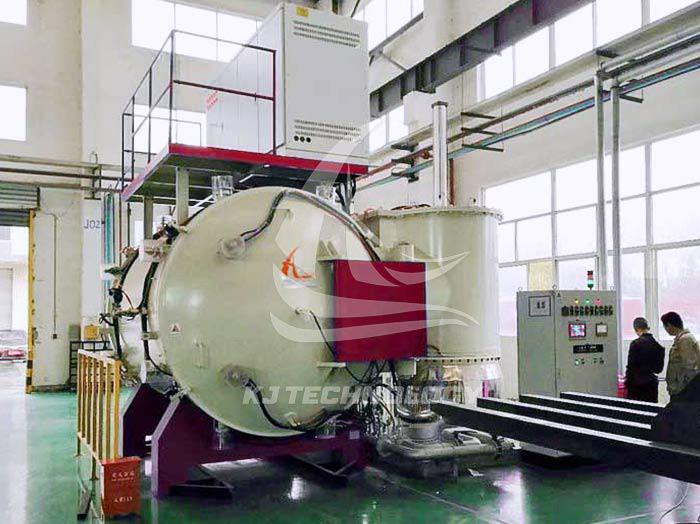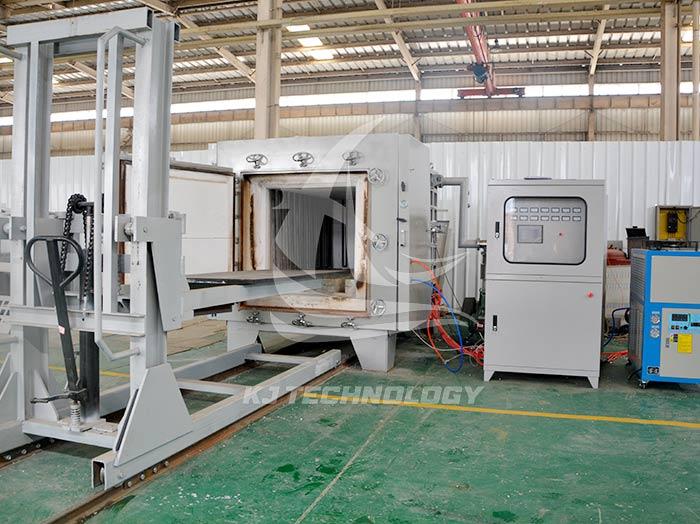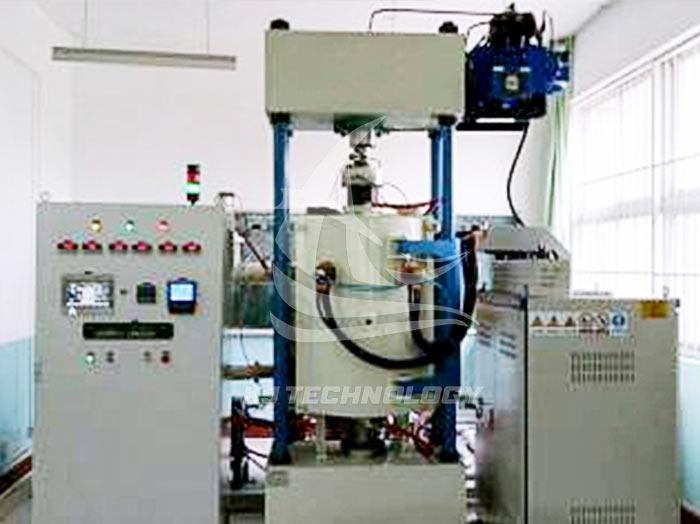How to avoid graphitization in diffusion welding vacuum furnace?
 08-18-2025 Author: KJ technology
08-18-2025 Author: KJ technology
The diffusion welding vacuum furnace can avoid graphitization by optimizing temperature control, selecting materials with low graphitization tendency, finely controlling pressure and time, using high-purity protective gas, controlling cooling rate, and adding inhibitors. The following is a specific analysis:
1. Temperature control:
Graphitization is the process by which carbonaceous materials transform from amorphous carbon to ordered graphite structures at high temperatures, with the starting temperature varying depending on the material (such as petroleum coke at around 1700 ℃ and asphalt coke at around 2000 ℃). During diffusion welding, it is necessary to strictly control the temperature to avoid exceeding the critical value of material graphitization. For example, during diamond brazing, the temperature is usually controlled between 950~1050 ℃, much lower than its graphitization temperature (above 1500 ℃), in order to prevent graphitization.
2. Material selection:
Choosing graphite materials with low graphitization tendency, such as high-purity and low sulfur content graphite, can reduce the risk of graphitization. Elements such as sulfur can hinder the migration of carbon atoms and inhibit graphitization, but excessive amounts may have the opposite effect and require a balanced composition.
3. Pressure and time regulation:
Pressurization can promote atomic diffusion, but it is necessary to control the pressure range (usually 0.5-50MPa) to avoid excessive pressure causing deformation of the workpiece or promoting graphitization. At the same time, shortening the high-temperature residence time can reduce the degree of graphitization, as the degree of graphitization is related to time, but the effect is much lower than that of temperature increase.
4. Protection of gas purity:
The use of high-purity protective gas (such as 99.99% argon) can reduce the oxidation of graphite parts and avoid the acceleration of graphitization caused by oxidation. Vacuum furnace gas leakage or impure protective gas (such as oxygen) can destroy the atmosphere inside the furnace and accelerate the oxidation and blackening of graphite parts.
5. Cooling speed control:
Slow cooling may promote graphitization, while rapid cooling can inhibit it. For processes that require control of graphitization, rapid cooling methods (such as cooling at a rate of 5 ℃/min) can be used to reduce the diffusion time of carbon atoms and prevent the formation of graphite structures.
6. Add inhibitors:
Adding inhibitors such as sulfur and manganese to materials can hinder carbon atom migration and inhibit graphitization. But it is necessary to control the amount of addition to avoid excessive performance degradation.








